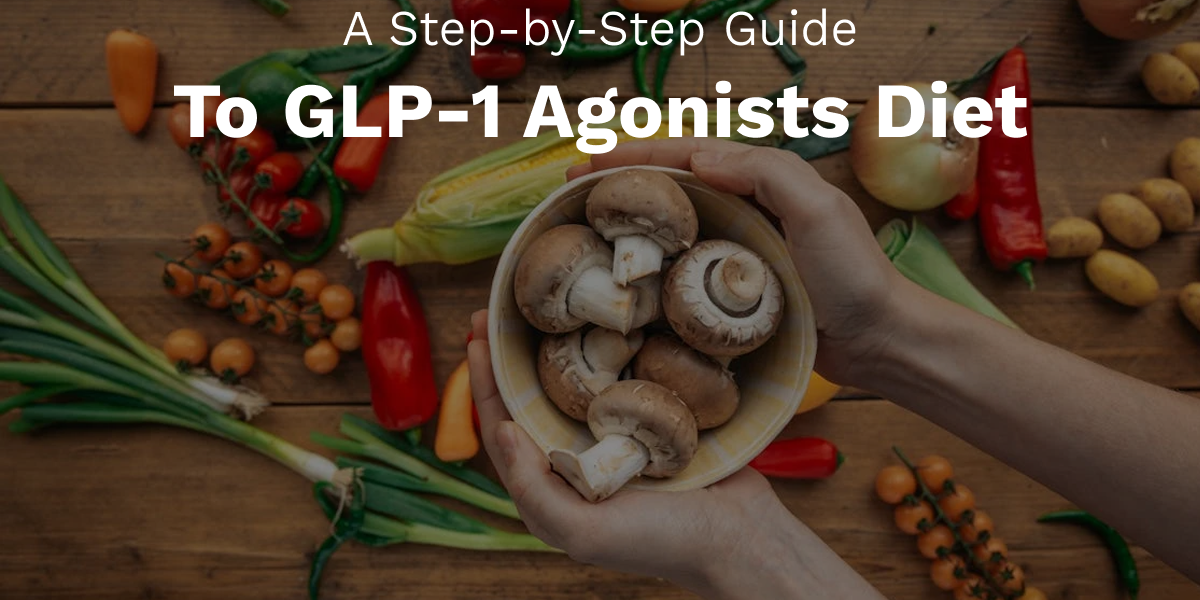GLP-1 agonist is a class of medications that have become popular for their role in aiding weight loss and appetite control. Before getting into medications, it is important to understand how GLP-1 agonists’ diets work.
This guide will provide a comprehensive overview of the GLP-1 agonists diet, and how to adjust your diet to work well with these medications.
The Basics of GLP1- Agonists
These medications help in:
- Enhance insulin effectiveness and production, and diminish glucagon release.
- Activates glucagon-like peptide-1 (GLP1) receptor promoting satiety
- Delaying gastric emptying
- Regulating appetite and caloric restriction.
They are best known for weight management of obesity and type 2 diabetes. However, the effectiveness of these medications can be greatly influenced by diet. When using aGLP-1 agonist, aligning your diet with the medication’s goals is crucial.
It is recommended to focus on a balanced diet rich in whole foods, including lean proteins, vegetables, fruits, and whole grains. Emphasize low glycemic index foods to maintain stable blood sugar levels and incorporate fiber-rich options to enhance fullness. Portion control is also crucial, as GLP-1 agonist can reduce appetite, making it easier to manage intake. Hydration, mindful eating, and minimizing processed foods further support the medication’s effectiveness and promote overall health.
Key GLP1 Agonists and Diet
Some of the popular GLP-1 Agonists are: Wegovy, Zepbound, and Saxenda which have become popular for aiding in weight loss and improving metabolic health. These medications can significantly improve weight loss outcomes and metabolic health, but they are most effective when combined with a healthy diet.
Wegovy, Zepbound & Saxenda
Wegovy (semaglutide) and Zepbound (tirzwepatide) GLP-1 agonist are specifically designed for weight management. They are once-weekly injectables. Studies have shown significant results in clinical trials, with users experiencing considerable weight loss compared to placebo. Saxenda (liraglutide) is another GLP-1 agonist. It activates GLP-1 agonist receptor in the brain, regulating appetite.
Dietary Tips for GLP-1 Agonist
Balanced Meals: Focus on a balanced diet rich in lean proteins, whole grains, fruits, and vegetables. Wegovy is most effective when used alongside a nutritious diet.
Portion Control: Be mindful of portion sizes. Wegovy can help reduce appetite, This helps regulate portion sizes and prevents overeating.
Hydration: Drink plenty of water. Staying hydrated supports overall health and can help manage appetite.
Protein Intake: Since Zepbound can enhance muscle mass, increasing protein intake can support muscle repair and growth. Include sources like lean meats, fish, legumes, and dairy.
Balanced Macronutrients: Maintain a balanced intake of carbohydrates and fats. This helps ensure you’re getting sufficient energy and nutrients to help your body heal and stay healthy, include foods with anti-inflammatory benefits, such as berries, leafy greens, and nuts.
Mindful Eating: Practice mindful eating by eating at a leisurely pace and listening to your body’s hunger cues. Saxenda can help you feel satisfied with smaller meals.
Fiber-Rich Foods: Include high-fiber foods like vegetables, fruits, and whole grains to help with satiety and digestive health.
Regular Meals: Consistent meal times can help maintain stable blood sugar levels and prevent extreme hunger or overeating.
General Dietary Considerations for GLP-1 Agonists
Low Glycemic Index Foods: Foods with a low glycemic index (GI) can help maintain steady blood sugar levels and are beneficial when using GLP-1 agonists.
Healthy Fats: Incorporate sources of healthy fats, such as avocados, nuts, and olive oil, to support overall health and satiety.
Limit Processed Foods: Processed foods can be high in unhealthy fats, sugars, and sodium. Focus on whole, unprocessed foods to maximize the benefits of your medication.
High-Protein Diet: Including a variety of protein sources in your diet ensures you’re getting all the necessary amino acids that your body needs for optimal functioning when incorporating GLP-1 agonists into your routine. Lean meat, fish, dairy, nuts, and seeds are a great source of protein. If you struggle to get enough protein from whole foods, protein powders or bars might be helpful. Consuming a lot of protein can significantly improve muscle repair and growth. contribute to satiety. Including various protein-rich foods in your meals can help your body rebuild and grow, you can create a balanced and nutritious diet that complements your use of GLP-1 agonists effectively.
Consult a Professional Healthcare Provider
Seek expert advice before altering your diet or medication plan significantly.. Consultations with a healthcare provider or a registered dietitian can provide personalized guidance and adjustments based on your weight, medical condition, progress and health goals. Support from professionals can be motivating and practical for success. With the right approach, GLP-1 agonists can be a valuable component of your journey toward improved health and wellness.
Feel free to share your experiences with us or ask questions. Here’s to your health and success on this journey!

